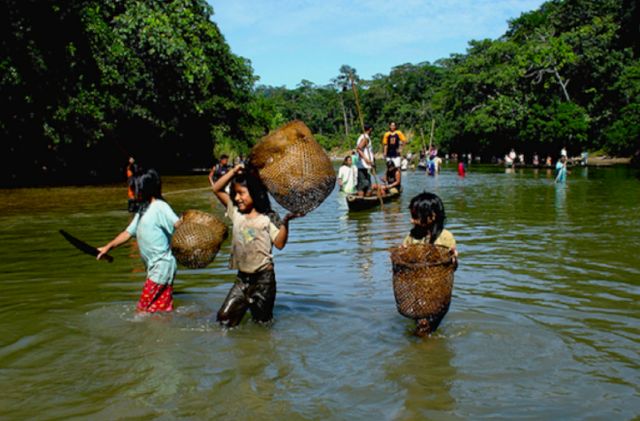
Publish What You Pay Norway and Oslo and Akershus University College are inviting you to a lunch seminar Wednesday October 7.
When: 12:00 – 13:30
Where: HiOA, Pilestredet 46, PA 128
From the news: Indigenous leaders are suffering renewed violence and repression in Colombia as the peace negotiations reach a crucial phase. A number of people have been killed over the last few months in armed clashes between indigenous organizations and settlers in Nicaragua. Tens of thousands of indigenous activists are marching to protest against the government in Ecuador. What do these developments mean for indigenous peoples and the aspiration for autonomy? What are the consequences for journalists and media?
Increasing levels of conflict and violence is affecting the buen vivir (a way of doing things that is community-centric, ecologically-balanced and culturally-sensitive) of indigenous peoples in Nicaragua, Colombia and Ecuador. In Nicaragua, armed indigenous groups have recently been in conflict with armed mestizo settlers in the Rio Coco Arriba/Waspam regions of Northern Nicaragua. Lives have been lost and some commentators fear a return to violent conflict of the type seen 25 years ago. The invited guest speaker, Jose Maximo Garth is journalist in La Prensa newspaper and a master student of a Norad/Norhed financed programme jointly organized by HiOA and three indigenous and communitarian universities. In Colombia, increasing levels of violence have been affecting indigenous communities as the peace talks in Cuba has reached a point where armed parties feel the need to create “facts on the ground”. The invited speaker, Dora Muños is director of communication studies at UAIIN, the indigenous intercultural university in Cauca. Ecuador is today seeing some of the most impressing indigenous popular manifestations and protests for 25 years. The invited speaker; Gerardo Simbaña, is also an experienced media communicator who has effectively made use of new platform to disseminate popular voices and regime repression during this and previous manifestations. Simbaño is currently a member of staff at Pluriversidad Amwtay Wasi.
Program Wednesday October 7
1200 Welcome by Christine Amdam, Publish What You Pay Norway and Professor Roy Krøvel, HiOA
1215 Jose Maximo Garth: Tierra and violent conflict between settlers and indigenous groups in Nicaragua. The role of the media.
1230 Dora Muños: Non-violent indigenous guards and armed groups in Colombia - in the shadow of the peace process.
1245 Gerardo Simbaña: The potential of indigenous communication in social protest in Ecuador.
1300 Norwegian perspectives – Paul Patrick Borhaug on his photojournalism in the Amazon.
Discussion
1330 Finish
